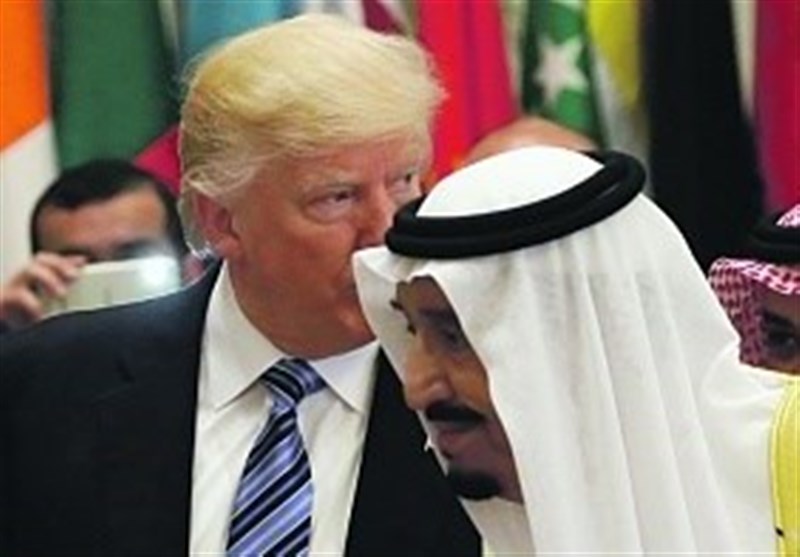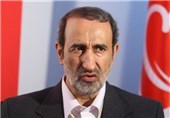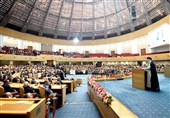Trump Wants Oil World Doesn't Have to Give: Report
TEHRAN (Tasnim) – US President Donald Trump’s request for more Saudi Arabian oil put a spotlight on growing US unease about how quickly the crude sector has switched from glut to deficit, but a boost in Middle East production may not be enough to stem the price rallies that have hit consumers.
Supply disruptions in major producers like Canada and Venezuela, coupled with strong crude demand from robust global growth, have tightened the oil market faster than many analysts expected, The Wall Street Journal reported on Monday.
Early Monday, Libya’s state-run oil company said it could not honor contracts to deliver oil at two ports, widening outages there, after rebels blocked exports. Prices have shot up in recent sessions in response.
On Friday, US crude ended just over $74 a barrel, its highest since November 2014. Brent, the global price yardstick, is close to $80 a barrel. Early Monday, prices were slightly lower.
That has contributed to rising gasoline prices in the US, just months before the midterm elections. GasBuddy, a fuel-tracking app, estimates that prices will be around $2.90 a gallon for the Independence Day holiday, the highest on that day since 2014.
In several tweets, Trump has blamed the Organization of the Petroleum Exporting Countries and on Saturday, he said he had asked Saudi Arabia, in a call to its leader, to boost its oil production.
But even if the cartel heeds Trump’s call to increase production, there may not be enough spare capacity to quickly make up for supply disruptions, particularly as renewed US sanctions look set to drastically reduce Iranian production, analysts say.
With the combination of supply disruptions and high demand, “we are getting a preview of how the oil market will react when Iranian oil comes off the market,” said Ellen Wald, oil-market analyst and president of Transversal Consulting.
Only last summer, oil producers and consumers were contemplating a future of cheap crude following three years of massive oversupply fueled by booming US output. Oil prices fell below $30 a barrel in early 2016 and only major production cuts by OPEC and its allies managed to arrest the decline.
Now prices have risen to levels that analysts say could begin to hurt the global economy.
Higher prices take money out of consumer’s pockets and damp wider spending while raising energy costs for business. Some economists have a rule of thumb for the US: Every one-penny reduction in gas prices puts more than $1 billion a year into consumers’ hands.
Still, the oil industry is such a large part of the US economy now that some economists believe high prices will in the end benefit GDP.
Democrats have sought to capitalize on the issue. “The president saying so doesn’t make it so,” said Senate Minority Leader Chuck Schumer (D., N.Y.) on Sunday. “We await a large Saudi increase in oil production that will actually lower gas prices at the pump so the consumer will recognize it and for the administration to reverse plans to roll back the gas mileage standards so consumers can save money.”
Inside the White House, aides believe the president’s call to Saudi Arabia was helpful in that Trump received assurances of Saudi cooperation.
One measure of the call’s value is that it provoked a “hostile” reaction from Iran, which sees the president’s intervention on global oil production as a threat to its interests, administration aides say.
The US isn’t the only country complaining. The recent decision by OPEC and its allies to relax their production cap and allow about 600,000 barrels a day of new crude on the market came after big-ticket consumers such as India and China asked it to open the taps.
On Saturday Trump tweeted: “I am asking that Saudi Arabia increase oil production, maybe up to 2,000,000 barrels.”
Few analysts believe that number is possible and that there is the spare capacity in general needed to compensate for current disruptions to the oil supply.
As US sanctions dig in, the International Energy Agency estimates that 900,000 barrels a day of Iranian crude could be off the market next year, which would halve Tehran’s exports of the commodity.
Economic and political turmoil in Venezuela has hammered its production, contributing to falling global supply. The IEA says the crisis has taken one million barrels a day off the market in the past two years and would likely slash an additional 550,000 barrels a day next year.
A dispute in Libya over oil-marketing rights is hindering the North African nation’s export capacity. On Monday, oil officials declared force majeure at two more ports amid a standoff with rebels there. With two other ports previously shuttered, Libyan production is now down by about 850,000 barrels a day, from one million barrels a day before the disruptions.
Even in the US, where production is running at a record pace at almost 11 million barrels a day, pipeline constraints are leading some drillers to idle rigs. In Canada, a continued shutdown of an important oil facility has limited output by as much as 350,000 barrels a day.
“The global oil glut has been eliminated,” said Rob Thummel, who manages energy assets for Leawood, Kan.-based Tortoise Advisors. “Without increased OPEC production, the global oil market will remain undersupplied in the second half of 2018, which would likely result in higher oil and gasoline prices.”
To make up for the loss of Iran’s supply and other disruptions, Middle East producers could swiftly increase production by 1.1 million barrels a day, the IEA said. Half of that amount—530,000 barrels a day—could be shouldered by Saudi Arabia, with rest coming from the United Arab Emirates, Kuwait and Iraq. In addition, Russia could increase production by up to 300,000 barrels a day over the coming months, according to the agency.
But disruptions in Libya, Iran, Venezuela “mean that the increase from those with spare capacity will likely be larger,” said Warren Patterson, commodity strategist at ING Bank.
Unlike previous periods of higher prices, the rise in US oil output, which has more than doubled in a decade, means that a large swath of the US economy stands to benefit from higher prices.
But even some producers don’t want to see oil go too high, for fear it could harm the global economy and so hit demand, among other reasons.
While many US oil companies welcomed prices at $65 or $75 a barrel, some drillers said the prospect of further increases may not be positive.
“I don’t necessarily want higher prices,” said David H. Arrington, who operates an independent oil-and-gas company in the booming Permian basin in West Texas and New Mexico. “Our number one problem (in West Texas) is people. We need people in the offices, in the oil field, on frack jobs, in grocery stores and even in convenience stores. If prices go up, it will aggravate that problem.”
Boom areas like the Permian have full employment. Rising prices create higher service costs and increase the cost for labor.
Recently, Iran's first vice president said the country was considering oil exports by the private sector in a bid to thwart forthcoming US sanctions, which mostly aim to curtail the Islamic Republic's revenues by blocking its crude oil exports.
Addressing a conference held to mark National Day of Industry and Mine in Tehran on Sunday, Es’haq Jahangiri said, “The target of the US is firstly (to cut down Iran's) oil (sales). They want Iran's oil not to be sold, which this is impossible and such measures are taken in line with a psychological war.”
In May, Trump announced that he would pull America out of the 2015 nuclear agreement between Tehran and world powers and re-impose the sanctions that the deal had envisaged to be lifted.
He emphasized that the sanctions, which are to be imposed on Iran, would be “at the highest level.”






